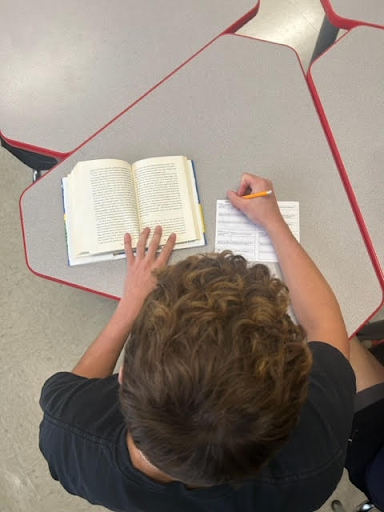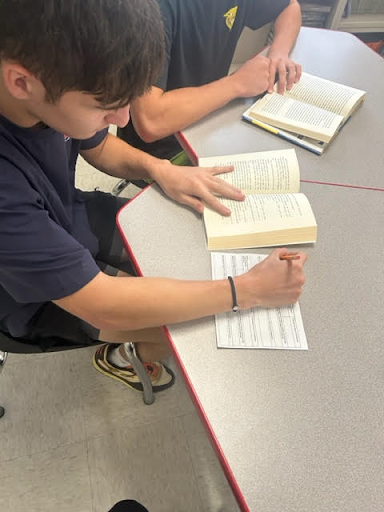English Language Arts teachers tend to struggle to understand why their students are not voracious readers. After all, what first drew us to our content areas is a love for the written word. Literacy, reading comprehension, and fluency are issues of concern in more than just the ELA content area. How can and English Language Arts teacher help their students become more fluent readers? How can an English Language Arts teacher improve comprehension skills overall in order to help a student’s development in a multitude of content areas? The answer lies within developing strong and passionate readers.
“Reading for leisure can be an amazing way to keep our brains sharp, learn to deal with difficult emotions, and practice empathy for others.”
In my Young Adult Literature course, many students are there to check a box for graduation, not because they are passionate about the genre. However, as many of us know, reading for leisure can be an amazing way to keep our brains sharp, learn to deal with difficult emotions, and practice empathy for others. No matter where these students are headed after high school, they can benefit from the consumption of great (and sometimes, not so great) novels.
Many students are passionate consumers of stories, whether that is through the format of a video game, movie, TV show, or favorite album, but they remain resistant to reading. In order to help students realize they are not interested in reading because they have not yet found the right book, I have them complete the First Chapter Assessment at the beginning of the semester.
Step #1 – Prepare and print the necessary materials
Decide how long you want this activity to take and adjust the amount of square sheets (attached in the resources portion) as needed. Print the sheets and slice them into squares. You can place blank sheets around the room as students pass through stations or you can pass out the amount of squares you are requiring for completion of the activity all at once.
After adjusting the quantities, decide how long you want to have students spend on each evaluation. Using the attached slideshow, you can add video timers featuring various types of music. I would include timers that accommodate the following:
- Judge a Book by Its Cover (Suggested time: 2-5 minutes)
- Silent Reading Time (Suggested time: 15-20 minutes)
- Time to Unwind & Discuss (Suggested Time 5-10 minutes)
This activity can be adjusted for timing as well as for a variety of reading speeds. Typically, I will have students fill out 4 square sheets for this activity. This allows students to settle in, complete a bellringer, and listen to instructions for this task. In this time frame, I would have students spend 2 minutes in the Judge a Book by Its Cover stage, 15 minutes in the silent reading stage, and 5 minutes in the Unwind & Discuss time. The last break would be cut short by the bell.
Step #2 – Prep the room
When I do this activity, I prepare the room by placing various squares around the room in station format. I peruse my shelves and look for Young Adult books I already have available to students. If you do not have an extensive Young Adult library, I would consider pairing with your school’s librarian. There should be at least 1 book per student in the class placed around the room.
This is a great opportunity to move around the room throughout instruction and adjust where they usually sit. I suggest setting up stations in a variety of places. Use regular student desks, have a couple of places on the carpet, or use this activity to cultivate specific reading areas in your room. I typically have students use desks, the podium, charging stations, and the carpet.
Step #3 – Brief the students
Walk the students through filling out one of the square sheets with a book you know they are familiar with. Explain the various time constraints as you have adjusted them. Display the timers on the board. Emphasize that all time allotted must be used for the specific activities. If a student completes the first chapter of a book, and time remains, they should continue reading until all of the allotted time has been completed.
Spend at least one class period working on this activity for multiple books, or you can have students fill out one sheet a day for 3-5 class periods.
Step #4 – Discussion
After you have allowed students to complete at least three square sheets, have an open discussion on which books they would like to revisit and read during their free time. These could all be options for students to continue reading as choice books or for silent reading time.
Step #5- Extend the activity
Have students pick the book that they would most like to continue reading. For the next couple of class periods, have students spend 10-20 minutes a day silently reading this book. Then, have students create an “Elevator Pitch” or 30 second persuasive presentation convince other students to read their selected book. Students can fill out a graphic organizer as attached below or you can use your own approved method. Have students present their elevator pitches to their classmates in a speed dating style. After students have had a couple of chances to present, join in with them in order to listen and evaluate their speeches.
There is an option to have students vote on the most persuasive speaker for a prize. This is not necessary, but it does add an extra layer of competition to their elevator pitches.
This activity can be adapted for a variety of time constraints and stages in the semester. It can also be used with, except for a couple of prints, items that you already have in your classroom. If you want to get students excited about reading, I suggest starting a choice book unit with the First Chapter Assessment.
Quotes from Students:
“I felt like the businessman I have always wanted to be.” – Aaden (12th grade student) on winning the Elevator Pitch contest.
“My favorite book that I read during the First Chapter Assessment was Dumplin’. I actually went on and read the whole thing.” – Abby (12th grade student)
“I liked reading Dear Martin. I wouldn’t have picked it up in the library, so it was good to have a chance to read it in class.” -Braiden (12th grade student)



Photos courtesy of the author.
Please login or register to claim PGPs.
Alternatively, you may use the PGP Request Form if you prefer to not register an account.



